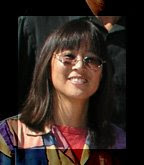So here it is, Friday, and I've managed to get through Chapters 1 and 2 of the User Guide over the past two days, running the software at the same time. I've got the software running on one older laptop (Windows XP) and one newer desktop (Vista). And here are some things I've learned so far.
Video acceleration is a must If you use the Design Navigator (or what is sometimes called Stitch Simulator in other programs), you must turn on Video Hardware Acceleration (see Video Card Settings in the Options and Preferences window) in order for the "flashing" to stop. Without video acceleration, the software completely erases the current "section" being drawn between each additional stitch. I had to set the acceleration level to 2 before the flashing would stop. My laptop does not have level 2 so I may not be able to remedy this little annoyance on the laptop - we'll see!
I cannot view a hoop on my laptop I'm not sure why this doesn't work, but if I attempt to select or view a hoop, the program "seizes" after I make the selection. The CPU usage goes up to 100% and I have to restart the machine in order to do anything further. As this machine is really not up to snuff according to the software requirements, I'll just have to not use this option. On my desktop machine, hoop viewing and selection work just fine.
I need to keep a running mental translation of various terms There are a lot of terms that are used in the User Guide that I've had to figure out. For example, a "mark" is what I call a stitch point (where the needle penetrates). An "embroidery code" is what I would call an "embroidery format" - i.e. the format a design needs to be saved in for a specific machine, like PES or DST. A "section" is a collection of stitches in the same color. A "satellite view" is more like a "navigation window" in other programs - it shows you your full design in a small window and draws a rectangle around the area that you're currently examining the main design window. "Edition" really means "editing". For example, the manual uses the term "edition" when trying to state that the design is being edited - it is in a state of edition! I suppose I could get used to this. An "embroidery sign" could perhaps be better called an "embroidery symbol". You can turn on/off the viewing of various "embroidery signs" such as needle "marks", connecting stitches, commands, etc.
There are some concepts I've yet to understand For example, there are "sections", "objects" and "blocks" and I've yet to understand what the difference is between them. The software has some nice snap-to-XX features, some of which I understand and some of which I don't. For example, you can turn on a snap-to-border or snap-to-node option, but what is snap-to-tangent point? I turned on the mystery options and didn't see any difference as I created new paths and shapes.
There are some reproducible bugs There are a few, seemingly minor bugs that I can consistently reproduce in the software. I'll report them in the User Community Forum to see what happens.
Overall, the software is fun to learn! I'm really enjoying this process of teaching myself how to use the software. But for those of us who don't really like reading manuals, wouldn't it be nice to have some little videos to watch that basically go through the manual for you?
Friday, June 5, 2009
What I've Learned So Far
Labels:
embroidery code,
embroidery sign,
glossary,
mark,
section,
video acceleration
Subscribe to:
Post Comments (Atom)

No comments:
Post a Comment